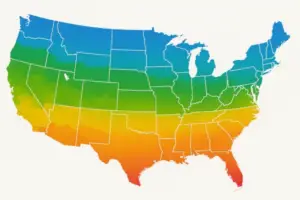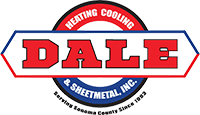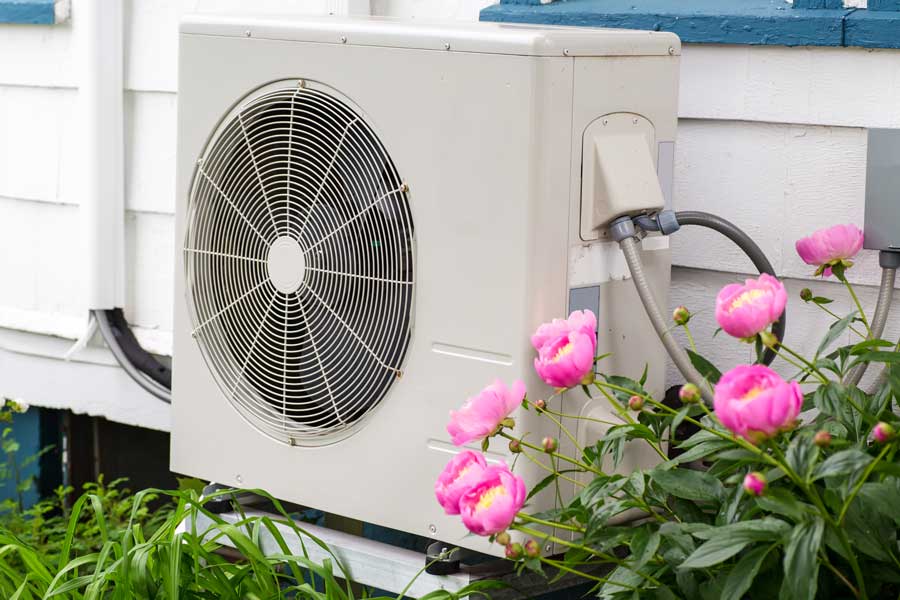Your home’s comfort system is more than just a luxury—it’s an essential part of maintaining a healthy, comfortable living environment for your family. When considering a heat pump installation, understanding how climate affects performance can make the difference between energy savings and unexpected costs.
Here in Northern California, our unique climate presents specific opportunities for heat pump efficiency that homeowners should consider.
| Topic | Key Points |
|---|---|
| Moderate Climate Advantage | Heat pumps perform optimally in temperatures above 30°F; ideal for Sonoma County winters |
| Energy Efficiency | Up to 50% more efficient than furnaces in moderate climates; significant utility savings |
| Climate Zone Classifications | ENERGY STAR zones 1-4 are most suitable; Northern California typically falls in zones 3-4 |
| Dual-Function Benefit | Single system for both heating and cooling; perfect for regions with both hot summers and mild winters |
Understanding Climate Zones and Heat Pump Performance
Heat pumps operate on a simple yet ingenious principle: they move heat instead of generating it. This distinction is crucial to understanding where these systems excel. Unlike conventional heating systems that burn fuel to create warmth, heat pumps extract existing heat from outside air (even in cold temperatures) and transfer it indoors—making them particularly efficient in moderate climates like we experience in Sonoma County.
The Department of Energy divides the United States into climate zones based on temperature patterns, with zones 1-4 typically representing milder climates where heat pumps demonstrate their greatest efficiency. Northern California’s unique microclimate, particularly in Sonoma County, generally falls within zones 3-4, positioning our region perfectly for heat pump technology. This classification means our typical winter temperatures rarely drop below the critical threshold where heat pump efficiency significantly declines.
Modern heat pump technology has evolved considerably, with today’s units capable of operating efficiently in temperatures as low as 25°F before supplemental heating becomes necessary. For our Santa Rosa neighbors, this translates to a system that can handle almost all winter heating demands without relying on less efficient backup heating methods, while still providing excellent cooling during our warm summer months. This versatility makes heat pumps an increasingly popular choice for heating in our region.
Optimal Climate Conditions for Heat Pump Efficiency

The sweet spot for heat pump operation occurs in regions with moderate temperature swings. Heat pumps demonstrate peak efficiency when outdoor temperatures remain above 30-40°F, which aligns perfectly with Sonoma County’s typical winter climate profile. While traditional heating systems maintain relatively consistent efficiency regardless of outdoor temperatures, heat pumps actually become more efficient as outdoor temperatures rise—making them extraordinarily cost-effective during our mild Northern California winters.
When evaluating whether your location is suitable for a heat pump, consider these climate factors:
- Winter temperature averages: Locations with winter temperatures typically above 30°F (like much of Sonoma County) are ideal candidates for standard heat pump systems.
- Humidity levels: Moderate humidity improves heat transfer efficiency, benefiting overall system performance.
- Temperature fluctuations: Areas with gradual temperature changes rather than extreme swings allow heat pumps to operate without frequent adjustment.
- Cooling season demands: Regions requiring both heating and cooling (like Northern California) maximize the dual-functionality benefit of heat pumps.
- Utility rates: Areas with high electric-to-gas price ratios may influence cost efficiency calculations.
Energy efficiency comparisons between heat pumps and conventional systems reveal striking differences across climate zones. In moderate climates like ours, heat pumps typically use 50% less electricity than electric furnaces or baseboard heaters for the same amount of heating. This efficiency advantage diminishes as temperatures drop below freezing for extended periods—something we rarely experience in Santa Rosa. For more specifics on how different heating systems compare, check out our article on the pros and cons of heat pumps.
Climate-Specific Heat Pump Solutions
Heat pump technology isn’t one-size-fits-all. Different climate zones benefit from specific heat pump variations designed to address their unique challenges. For Northern California’s climate profile, air-source heat pumps typically provide the optimal balance of efficiency and cost-effectiveness, though ground-source (geothermal) systems offer even greater efficiency for homeowners with suitable properties and installation budgets.
Climate-specific heat pump features to consider include:
- Variable-speed compressors adjust output based on actual heating and cooling demands, providing energy savings and improved comfort in variable climates like ours.
- Defrost cycles designed specifically for moderate humidity regions prevent efficiency loss without excessive energy consumption.
- Cold climate models with enhanced compressors and refrigerant management systems provide excellent efficiency even during our occasional cold snaps.
- Zoning capabilities allow targeted temperature control, particularly valuable in homes with significant sun exposure differences throughout the day.
- Smart controls that integrate with weather forecasts can optimize performance based on upcoming temperature changes.
For Sonoma County residents, properly sized systems with appropriately matched features deliver the greatest comfort and efficiency benefits. Our experience with local installations has demonstrated that right-sizing is crucial—systems that are either too large or too small will cycle inappropriately, reducing both comfort and energy efficiency. Finding this balance requires understanding both your home’s specific needs and our region’s climate patterns, something we address extensively in our cooling system consultations.
According to the U.S. Department of Energy, “When properly installed, an air-source heat pump can deliver one-and-a-half to three times more heat energy to a home than the electrical energy it consumes.” This efficiency ratio is particularly favorable in moderate climates like Sonoma County. Source: U.S. Department of Energy
Moderate Climate Advantage
Optimal in temps above 30°F, ideal for Sonata County winters.
Energy Efficiency
50% more efficient than furnaces, significant utility savings in moderate climates.
Climate Zones
Zones 1-4 suitable for heat pumps; Northern California in zones 3-4.
Dual-Function Benefit
Heating and cooling in one system, suitable for regions with varying climates.
Northern California’s Climate Advantage
Northern California’s unique climate positioning creates an ideal environment for heat pump technology. Our typically mild winters with temperatures rarely dropping below freezing for extended periods allow standard heat pump systems to operate within their optimal efficiency range throughout most of the year. Additionally, our warm summers with moderate humidity levels enable these same systems to provide efficient cooling without the extreme demands faced in more humid regions.
Climate data for Sonoma County shows average winter lows typically remaining above the crucial 30°F threshold where heat pump efficiency begins to decline significantly. This temperature profile means local homeowners can enjoy the full efficiency benefits of heat pump technology without extensive reliance on supplemental heating systems. For households concerned about lowering heating costs in winter, this represents a significant advantage over regions with harsher climates.
The combined heating and cooling functionality of heat pumps aligns perfectly with our region’s year-round climate needs. Rather than maintaining separate systems for heating and cooling, local homeowners can invest in a single, high-efficiency solution that addresses both seasonal requirements. This integration not only simplifies HVAC system design but also reduces maintenance requirements and often results in significant space savings compared to traditional heating and cooling equipment combinations.
Conclusion: Is a Heat Pump Right for Your Climate?
For most Sonoma County homeowners, heat pumps represent an ideal climate-matched solution that balances efficiency, comfort, and long-term value. Their exceptional performance in our moderate climate zone makes them particularly well-suited to local needs, providing energy-efficient heating during our mild winters and reliable cooling during warm summer months. By understanding how climate affects heat pump performance, you can make a more informed decision about whether this technology is the right fit for your home’s specific location and your family’s comfort needs.
Whether you’re building a new home or considering an upgrade to your existing HVAC system, evaluating your climate zone is an essential first step in determining if a heat pump makes sense for your situation. For personalized guidance on selecting the right heating and cooling solution for your specific Sonoma County location, we invite you to contact our team for a consultation. As your neighbors here in Santa Rosa, we’re committed to helping you navigate these important home comfort decisions with honest, expert advice tailored to our unique local climate.

